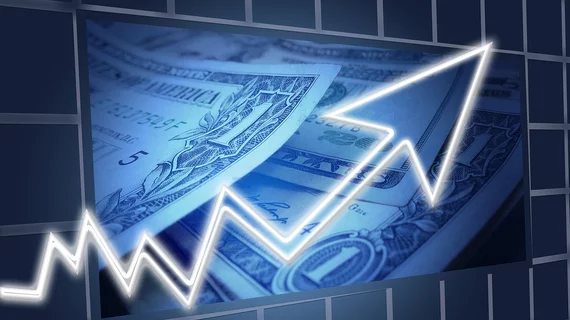Radiologist pay increases failing to keep pace with surging consumer prices
Diagnostic radiologist pay increases have failed to keep pace with the rising consumer price index, according to new research released Tuesday.
Members of the specialty saw their compensation increase about 2.13% between 2022-2023 during a time when the CPI climbed 3.4%. The gap is even larger when tracing back to 2019, according to the Medical Group Management Association. Radiologist pay increased about 7.48% over a five-year period while the index—used to measure changes in the price of consumer goods—leapt 21%.
Physicians have been forced to work harder to keep up with inflation. Radiologist relative value units, which measure their volume of work, climbed 3.33% in 2023 and 7.11% over the last five years.
"Despite being faced with escalating overhead, declining physician reimbursement and a challenging labor market, medical groups pushed themselves to elevated levels of productivity in 2023, ensuring they could meet the increased demand for care in their communities,” said Halee Fischer-Wright, MD, president and CEO of the association, which represents over 15,000 physician groups across radiology and other specialties.
MGMA compiled the report using data from more than 211,000 physicians and advanced practice providers such as nurse practitioners. Primary care physicians (4.44%) and surgical specialists (4.42%) saw the largest year-over-year gains in total median compensation, slightly outpacing CPI. Meanwhile, nonsurgical specialists saw a 1.81% pay increase between 2022-2023, the survey found. APPs bested all three groups, notching a 6.47% pay increase last year and 16.23% gain since pre-pandemic levels in 2019.
Primary care physicians, surgeons and other docs in independent practice all reported higher median RVUs year over year. Conversely, hospital-owned practices saw increases only for PCPs, surgeons and APPs. Invasive cardiologists recorded the largest RVU gain in 2023 (16.25%) while general psychiatrists saw the smallest (-8.63%). On the pay side, dermatologists saw the biggest compensation increase in 2023 (10.18%) and emergency medicine specialists saw the smallest (-1.67%).
“Regular reviews of physician compensation agreements are crucial to maintain fairness and market alignment,” the report concluded. “Changes in healthcare laws, regulations or compliance requirements may necessitate updates to compensation agreements. Fostering collaboration between physicians and administrators encourages developing compensation plans that effectively align incentives with practice objectives, boosting physician satisfaction and engagement.”
You can find the full report for free here.

